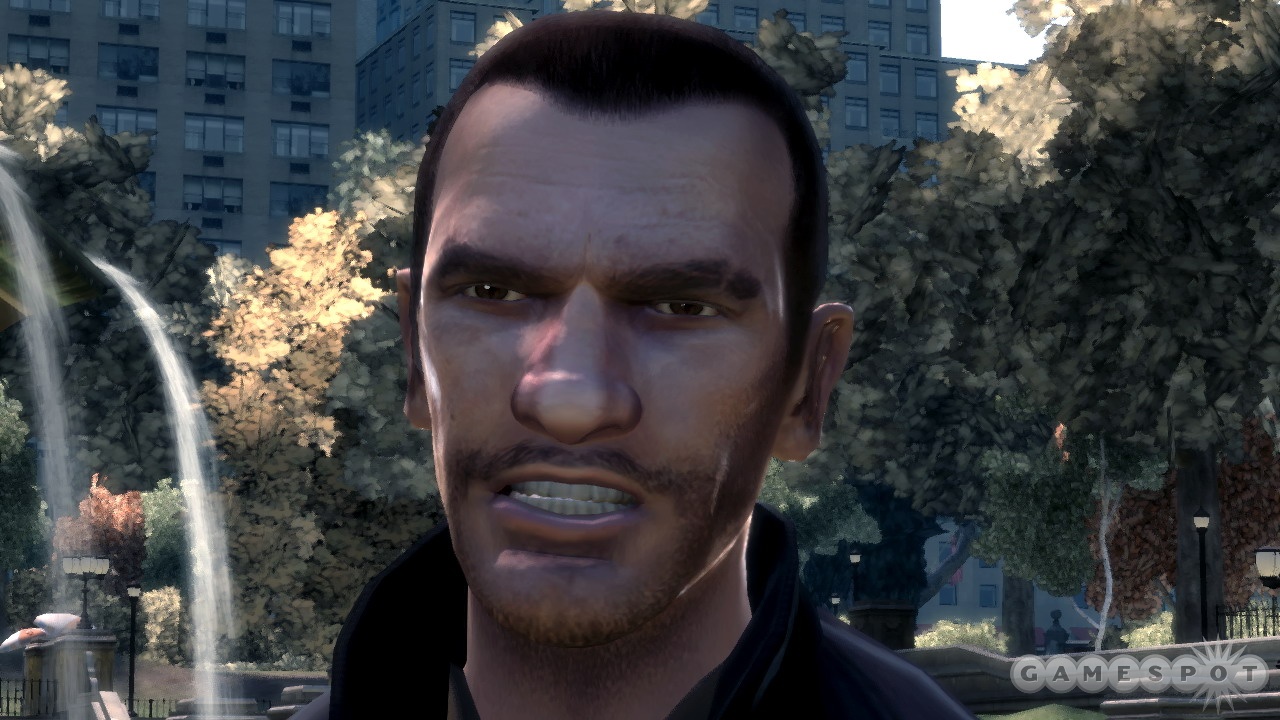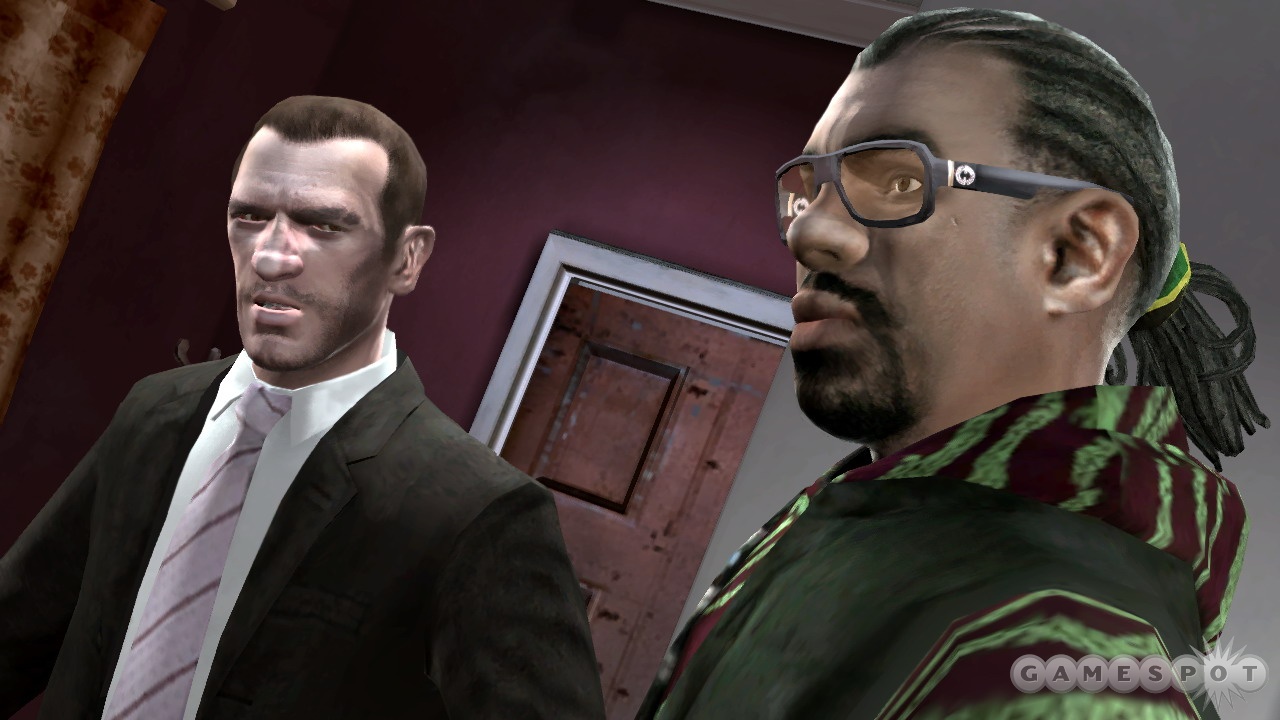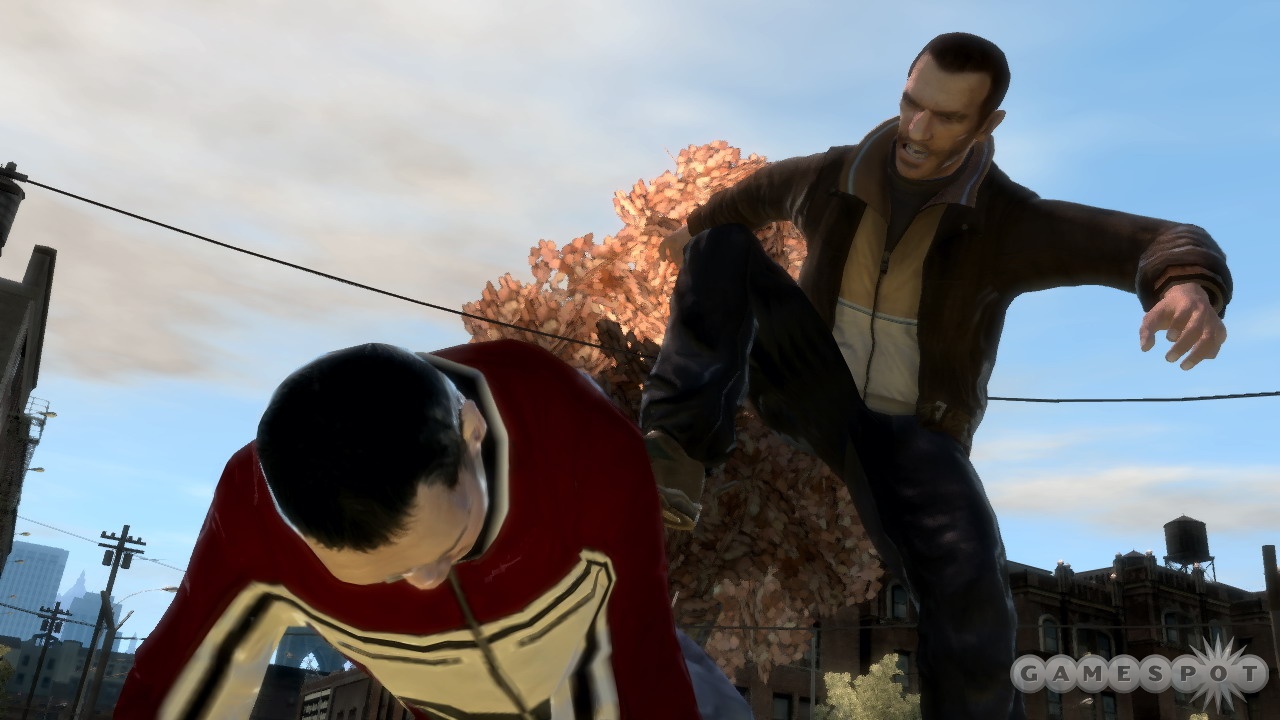Grand Theft Auto IV Q&A: Animating the World
We catch up with Rockstar North for a brief talk about animation in GTAIV.
Now that GTAIV has gone gold the team over at Rockstar North is finally getting a chance to field some questions from the masses. Rockstar has made two members of the team available for interrogation. First up is Mondo Ghulam, animation artist on GTAIV, who will be sharing information on how the characters in GTAIV have been brought to life. Later this week, we'll be checking in with another member of the team to hear about weapons.
GameSpot: How have the new consoles affected GTAIV's development?
Mondo Ghulam: Cutscene production has become more involved but more satisfying. Having fully featured skeletons--five fingers and so on--allows us to get to the right pose instead of trying to approximate it with less. Depth of field and full scene lighting has opened the door to much more cinematic-looking cutscenes. We have only scratched the surface with lighting. Higher resolution across the board--models, textures, normal maps--allow the camera to get closer than we used to. Having effectively no upper limit on animation duration and quantity has enabled us to keep much more fidelity in the animation and to realize the script in its full form. More-realistic and believable characters make for better storytelling.

GS: How has this affected the size of the team, say in comparison to something like San Andreas?
MG: The animation team is about double what it was on San Andreas. The cutscene team doubled in size for around 40 percent of the time we were on production.
GS: Did this lead you to change the way the teams were structured?
MG: There is a clear distinction between in-game and cutscene animation. The tasks and the tools are quite different. There has been some overlap in the content, however, with a number of the smaller connective cutscenes that were previously scripted being handled as full cutscenes.
GS: Can you give us a rough idea of how something goes from an idea on paper to an in-game cutscene?
MG: The basic flow is like so: Script > Read-through > Casting > Rehearsals > Environment > Mocap Shoot > Character Proxies > Mocap Data Solved > Motion Editing and Animation > Props > Facial Animation > In-Game Integration > Audio/Dialogue.
GS: When does the team start working on the cutscenes and cinemas in the development process?
MG: Usually quite late, though in real terms we worked on GTAIV for the last 16 months of production. I think total production time was around 36 months, which included motion-capture work at Perspective Studios in Long Island.
GS: Can you give us an idea of how many people you wound up using for the motion capture?
MG: For cutscenes, only one actor was used for Niko's body and facial animation. For the whole game, a huge number--including one per character, plus specialists for fighting, weapons, and stunt work.
GS: How did you handle the motion-capturing facial animations?
MG: Image Metrics handles all of the facial animation. Characters created here by Mike Kane and his team were rigged for animation by Image Metrics. Early on in cutscene production we took the plunge and went for full blend shape and bone animation for faces. It was a tough piece of tech to realize and took the combined efforts of people here at Rockstar North, Rockstar San Diego, and Image Metrics. It has more than paid off.

GS: How much attention do you and the team pay to movies and the increased use of CGI? Do you think that work has any impact or bearing on video game animation?
MG: Personally, a huge amount. Though improving all the time and at great speed in terms of raw quality, CGI in films has the edge on games. I'm not talking about prerendered cutscenes here--there's no reason why they can't or shouldn't look every bit as good as film CGI.
With film CGI, everything you see onscreen has most likely been rendered offline, whereas those doing cutscenes in-game need to do that in real time/30 frames per second. If you look at CGI in movies maybe five years ago, in terms of features, games are close, but in terms of raw pixel quality we're at a quarter of the resolution. For me, this is what we should be aiming for.
With a game like ours, we not only have several movies' worth of animation but we also have even more gameplay interwoven with the story. In terms of production there is a lot more to coordinate and integrate--"two masters to serve," as it were. Ultimately, the two should go hand in hand to produce a singular experience for the player.
GS: Thanks for your time.
Got a news tip or want to contact us directly? Email news@gamespot.com

Join the conversation